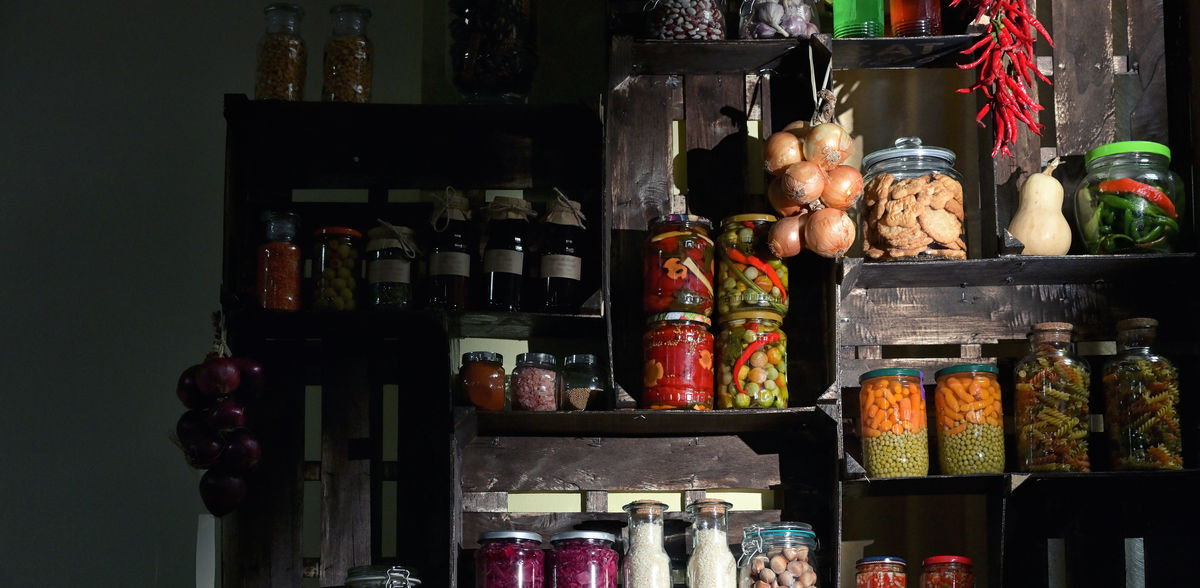A look in the pantry: these foods last particularly long
The NRW consumer advice center gives tips on which products are virtually non-perishable if stored correctly
Advertisement
- Salt and sugar Table salt and sugar can be kept indefinitely as long as they are stored dry and in closed packaging. To avoid lumps, they should be protected from moisture. However, lumpy salt (whether sea or table salt) or sugar can still be used.
- rice and flour White rice and wild rice can be kept for several years if stored in a dry and airtight place. Some rice varieties such as red and black rice as well as quinoa and amaranth are exceptions, as they have a higher natural fat content and can therefore spoil more quickly. flour can be used for up to one year after the best-before date, provided it is kept sealed and stored in a dry place. However, impurities or lumps in the flour or rice indicate pest infestation. These foods should be disposed of.
- Pasta Pasta made from 100 percent durum wheat semolina also has a very long shelf life under ideal storage conditions. Wholemeal and egg pasta are an exception. They should be consumed within one year of the best-before date.
- White wine vinegar and water White wine vinegar can be kept for several years thanks to its high acid content. Water in glass bottles can also be drunk indefinitely as long as it has been stored in a cool, dark place. However, the best-before date should be observed for water in plastic bottles, as the ingredients in the packaging can leach into the water.
- Honey Honey is a natural product and is virtually non-perishable, provided it is stored correctly, i.e. in a cool, dry and dark place. If the honey crystallizes, this is not a sign of spoilage, but a natural process. The honey can become liquid again by carefully heating it.
- Canned foods can be kept for many years as long as they are undamaged and unopened. It is best to store them in a dry environment at up to 19 degrees. But beware of dents or dings. Damage can cause coating agents to migrate from the can into the product. The same applies if a tin can has been opened once. The contents should then be decanted. A bloated tin can must be disposed of, as harmful germs may have multiplied.
- Difference between best-before and use-by dates Packaged foods are either marked with a best-before date or a use-by date. The best-before date (BBD) indicates until when the manufacturer guarantees the quality of their product. If all parts of the packaging are sealed and the food is stored correctly, it is often still safe to eat once the best-before date has passed. It is best to check the food with your own senses: see, smell, taste. The use-by date for fresh products, on the other hand, should be strictly adhered to and can be found on chicken, fish or ready-to-cut bagged salads, for example. It indicates the last day on which the food can be sold and consumed.
Note: This article has been translated using a computer system without human intervention. LUMITOS offers these automatic translations to present a wider range of current news. Since this article has been translated with automatic translation, it is possible that it contains errors in vocabulary, syntax or grammar. The original article in German can be found here.
Other news from the department business & finance
Most read news
More news from our other portals
See the theme worlds for related content
Topic world Food safety
Food safety is at the heart of the food and beverage industry. It ensures that the food we eat every day is not only nutritious, but also free of harmful contaminants. From field to plate, the industry monitors and regulates every step of the process with strict quality controls, advanced testing methods and continuous research.

Topic world Food safety
Food safety is at the heart of the food and beverage industry. It ensures that the food we eat every day is not only nutritious, but also free of harmful contaminants. From field to plate, the industry monitors and regulates every step of the process with strict quality controls, advanced testing methods and continuous research.

























































